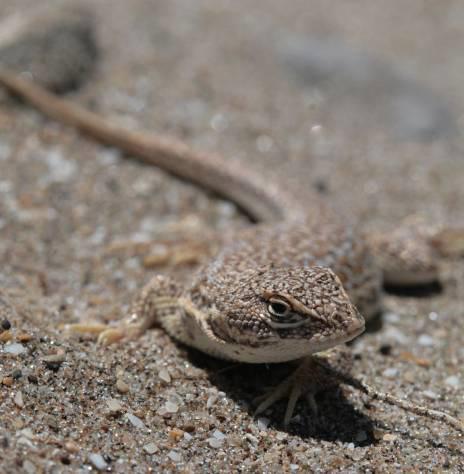Federico Kacoliris
Other projects
23 Sep 2008
Project for the Study and Conservation of the Sand Dunes Lizard (Liolaemus Multimaculatus) in Pampas Coastal Habitats
This project will identify the conservation needs of all populations of Sand Dune Lizard (L. multimaculatus) and work towards their long-term survival.

The Sand Dune Lizard –SDL- (Liolaemus multimaculatus) is a threatened endemic species of the pampas coastal dunes of Argentina. Main causes of lizard’s habitat lost and transformation include the extension of coastal cities and towns, the introduction of exotic vegetal species, uncontrolled tourism activities (i.e. transit of double-traction vehicles) and absence of management policies for coastal ecosystem. The high degree of habitat specialization of this lizard, make of SDL an extremely sensitive species to dunes habitat changes and small disturbances can reduce its natural population’s densities until making local extinctions. However, the information about its ecology and population status is scarce. Actually only seven relict and isolated populations exist, and six of them are placed in sectors that have been declared “Grasslands Valuable Areas” for South America, and only one population is partially protected by the “Mar Chiquito” Provincial Park.
The SDL Project is working in all the distribution area of this species, studying the ecology, and evaluating the conservation status of theses populations. We are performing studies in order to increase our knowledge about population dynamics and spatial ecology. We also are evaluating the main causes of local extinction and population declining. Our results will be used to develop a Conservation Action Plan for the Sand Dune Lizard. In order to inform the local community about problems concerning Sand Dune Lizard and coastal dunes; the SDL project is developing an educational campaign, which includes activities like visits to local schools, pamphlets, posters, etc.
During the study, we keep training students (of Argentine and other countries) on different field techniques and encourage them to pursue a career in conservation biology. The field work is very hard, and includes long surveys (in time and in space) in several coastal areas. The field work groups are around of 4 to 6 persons that work recording several data of the Lizard and the environment. We also work together with local people (i.e.: school teachers, management authorities) and with Park Rangers to promote SDL conservation and educational actions and developing an information feedback.
Research Program Objectives:
- Describe the main aspects of Sand Dune Lizard population dynamics (density, sex ratio, age structure);
- Describe the main aspects of SDL spatial ecology (habitat use, home range);
- Determine the conservation status for all the SDL relict populations.
- Educational Program and Management Objectives:
- Develop educational workshops in local schools;
- Develop educational pamphlets and posters about the SDL conservation status;
- Promote a Sand Dune Lizard Conservation Action Plan.